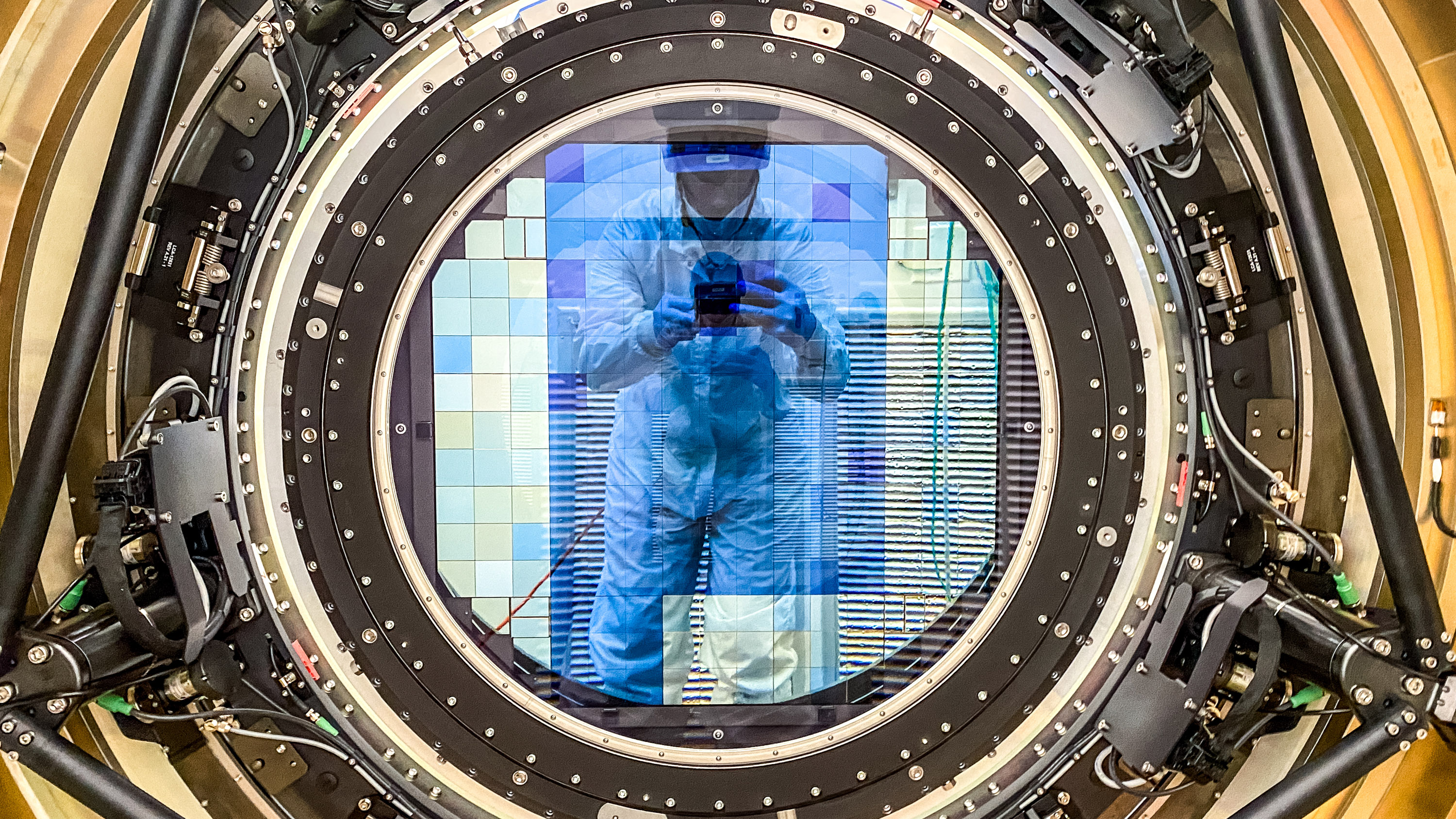Vera C. Rubin Observatory: 10 Breakthrough Technologies 2025
The telescope’s massive digital camera was built to take a lot of photos of the sky, in quick succession, for a very long time.

WHO
US Department of Energy’s SLAC National Accelerator Laboratory, US National Science Foundation
WHEN
6 months
The next time you glance up at the night sky, consider: The particles inside everything you can see make up only about 5% of what’s out there in the universe. Dark energy and dark matter constitute the rest, astronomers believe—but what exactly is this mysterious stuff?
A massive new telescope erected in Chile will explore this question and other cosmic unknowns. It’s named for Vera Rubin, an American astronomer who in the 1970s and 1980s observed stars moving faster than expected in the outer reaches of dozens of spiral galaxies. Her calculations made a strong case for the existence of dark matter—mass we can’t directly observe but that appears to shape everything from the paths of stars to the structure of the universe itself.
Explore the full 2025 list of 10 Breakthrough Technologies.
Soon, her namesake observatory will carry on that work in much higher definition. The facility, run by the SLAC National Accelerator Laboratory and the US National Science Foundation, will house the largest digital camera ever made for astronomy. And its first mission will be to complete what’s called the Legacy Survey of Space and Time. Astronomers will focus its giant lens on the sky over the Southern Hemisphere and snap photo after photo, passing over the same patches of sky repeatedly for a decade.
By the end of the survey, this 3.2-gigapixel camera will have catalogued 20 billion galaxies and collected up to 60 petabytes of data—roughly three times the amount currently stored by the US Library of Congress. Compiling all these images together, with help from specialized algorithms and a supercomputer, will give astronomers a time-lapse view of the sky. Seeing how so many galaxies are dispersed and shaped will enable them to study dark matter’s gravitational effect. They also plan to create the most detailed three-dimensional map of our Milky Way galaxy ever made.
If all goes well, the telescope will snap its first science-quality images—a special moment known as first light—in mid-2025. The public could see the first photo released from Rubin soon after.
Keep Reading
Most Popular
AI means the end of internet search as we’ve known it
Despite fewer clicks, copyright fights, and sometimes iffy answers, AI could unlock new ways to summon all the world’s knowledge.
10 Breakthrough Technologies 2025
What will really matter in the long run? That’s the question we tackle each year as we compile this annual list.
How a top Chinese AI model overcame US sanctions
With a new reasoning model that matches the performance of ChatGPT o1, DeepSeek managed to turn restrictions into innovation.
The 8 worst technology failures of 2024
Vertical farms, woke AI, and 23andMe made our annual list of failed tech.
Stay connected
Get the latest updates from
MIT Technology Review
Discover special offers, top stories, upcoming events, and more.